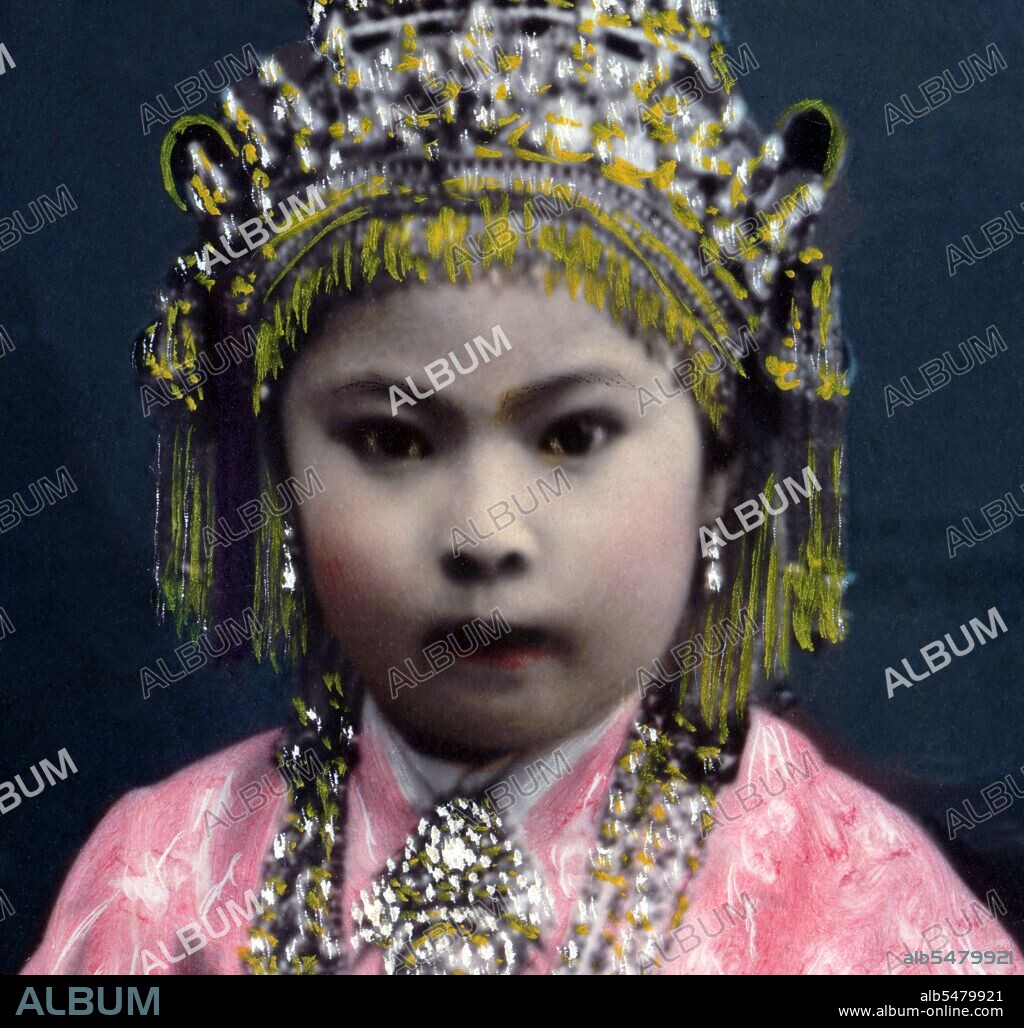alb5479921
Malaysia: A young nyonya or Peranakan girl, Penang, c. 1915

|
Añadir a otro lightbox |
|
Añadir a otro lightbox |



¿Ya tienes cuenta? Iniciar sesión
¿No tienes cuenta? Regístrate
Compra esta imagen

Título:
Malaysia: A young nyonya or Peranakan girl, Penang, c. 1915
Descripción:
Traducción automática: Chino peranakan y Baba-Nyonya son términos utilizados para los descendientes de inmigrantes chinos de finales de los siglos XV y XVI en el archipiélago indonesio-malayo durante la era colonial. Los miembros de esta comunidad en Melaka se identifican como 'Nyonya Baba' en lugar de 'Baba-Nyonya'. Nyonya es el término para las mujeres y Baba para los hombres. Se aplicó especialmente a las poblaciones étnicas chinas de los asentamientos británicos del estrecho de Malaya y la isla de Java controlada por los holandeses y otros lugares, que habían adoptado parcial o totalmente las costumbres malayas para asimilarse de alguna manera a las comunidades locales. En la época colonial eran una élite en Singapur, Melaka y Penang, identificándose fuertemente con la administración británica. La mayoría ha vivido durante generaciones a lo largo del Estrecho de Malaca. Generalmente eran comerciantes, intermediarios entre británicos y chinos, o entre chinos y malayos, o viceversa, porque a menudo recibían educación en inglés. Debido a esto, casi siempre tenían la capacidad de hablar dos o más idiomas. En generaciones posteriores, algunos perdieron la capacidad de hablar chino a medida que se asimilaron más plenamente a la cultura de la península malaya y comenzaron a hablar malayo con fluidez como primera o segunda lengua. Si bien el término Peranakan se usa más comúnmente entre los chinos étnicos para aquellos de ascendencia china, también conocidos como chinos del Estrecho (llamados así por los Asentamientos del Estrecho), también hay otras comunidades peranakan comparativamente pequeñas, como los indios hindúes peranakan (Chitty), Peranakans musulmanes indios (Jawi Pekan) y peranakans euroasiáticos (Kristang o cristianos)
Peranakan Chinese and Baba-Nyonya are terms used for the descendants of late 15th and 16th-century Chinese immigrants to the Indonesian-Malay Archipelago during the Colonial era. Members of this community in Melaka identify themselves as 'Nyonya Baba' instead of 'Baba-Nyonya'. Nyonya is the term for the women and Baba for the men. It applied especially to the ethnic Chinese populations of the British Straits Settlements of Malaya and the Dutch-controlled island of Java and other locations, who had adopted partially or in full Malay customs to become somewhat assimilated into the local communities. In colonial times they were an elite in Singapore, Melaka and Penang, identifying strongly with the British administration. Most have lived for generations along the Straits of Malacca. They were usually traders, the middleman of the British and the Chinese, or the Chinese and Malays, or vice versa because they were often educated in English. Because of this, they almost always had the ability to speak two or more languages. In later generations, some lost the ability to speak Chinese as they became more fully assimilated into the Malay Peninsula's culture and started to speak Malay fluently as a first or second language. While the term Peranakan is most commonly used among the ethnic Chinese for those of Chinese descent also known as Straits Chinese (named after the Straits Settlements), there are also other, comparatively small Peranakan communities, such as the Indian Hindu Peranakans (Chitty), Indian Muslim Peranakans (Jawi Pekan) and Eurasian Peranakans (Kristang or Christians).
Crédito:
Album / Pictures From History/Universal Images Group
Autorizaciones:
Modelo: No - Propiedad: No
¿Preguntas relacionadas con los derechos?
¿Preguntas relacionadas con los derechos?
Tamaño imagen:
4300 x 4093 px | 50.4 MB
Tamaño impresión:
36.4 x 34.7 cm | 14.3 x 13.6 in (300 dpi)
 Pinterest
Pinterest Twitter
Twitter Facebook
Facebook Copiar enlace
Copiar enlace Email
Email
